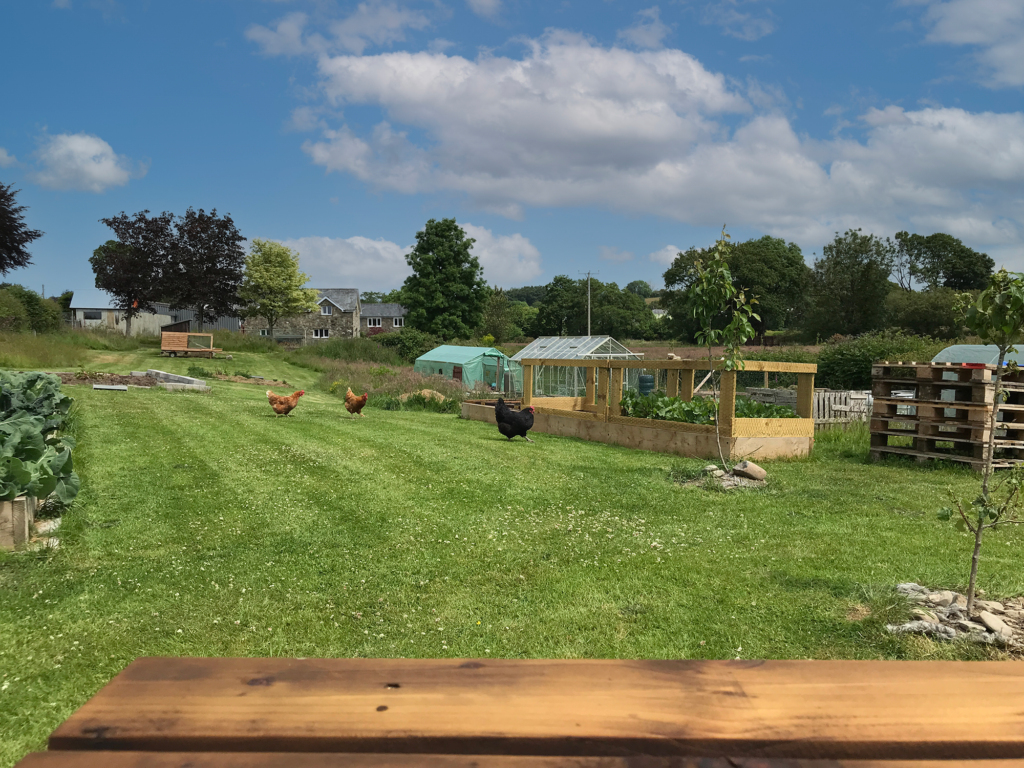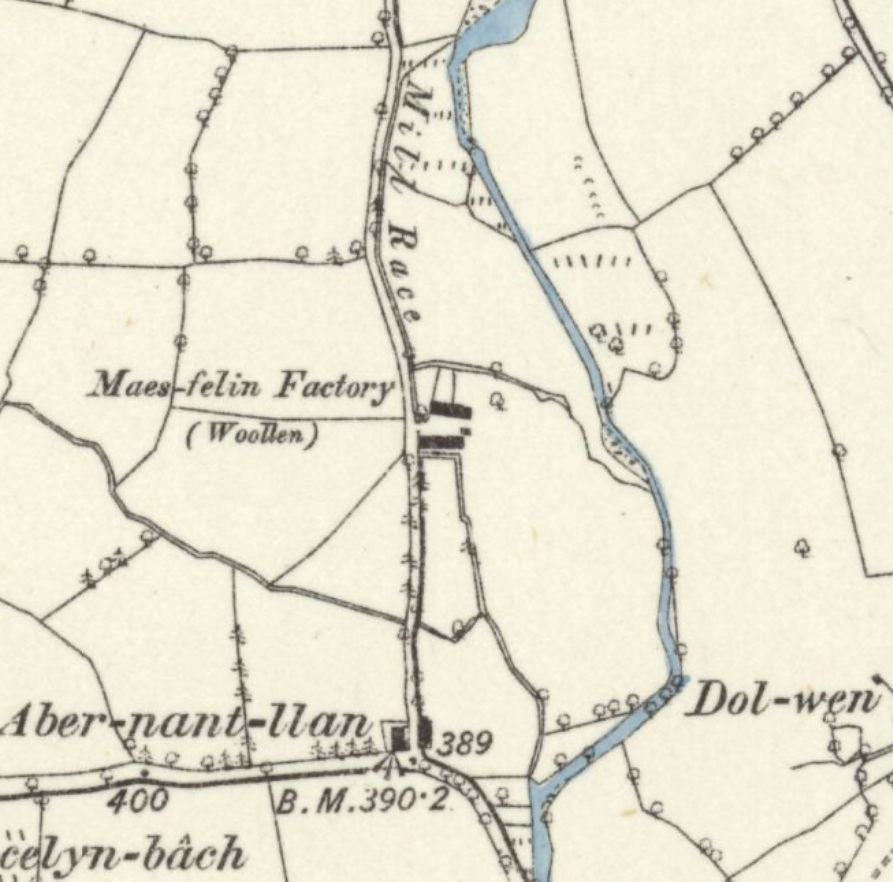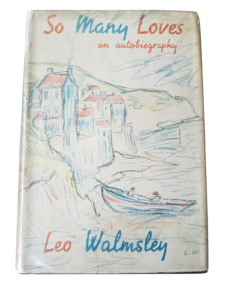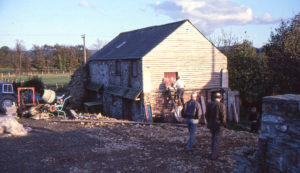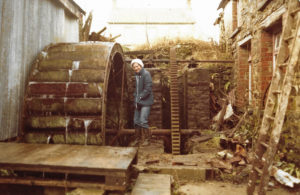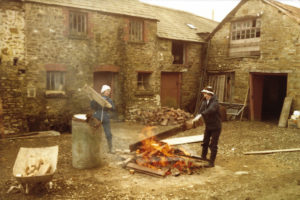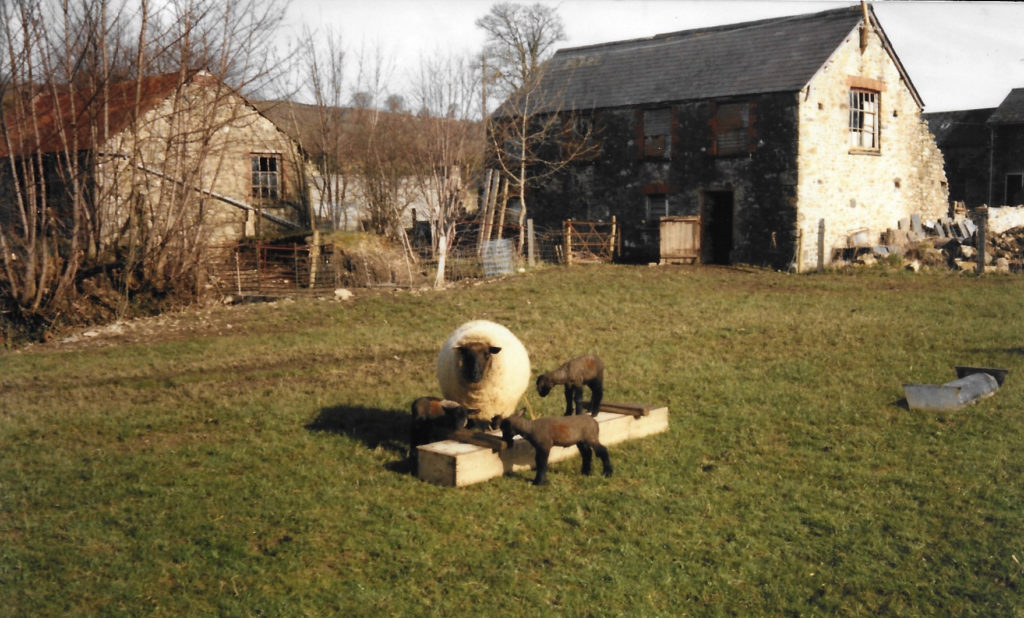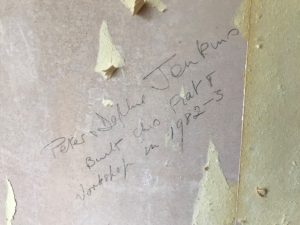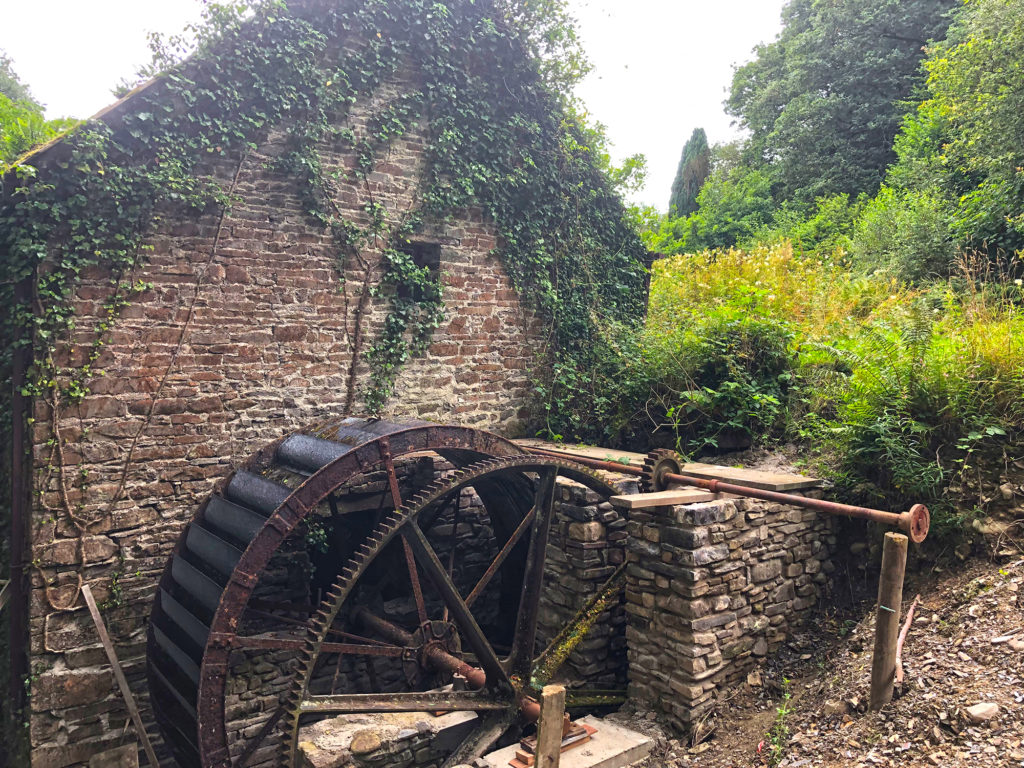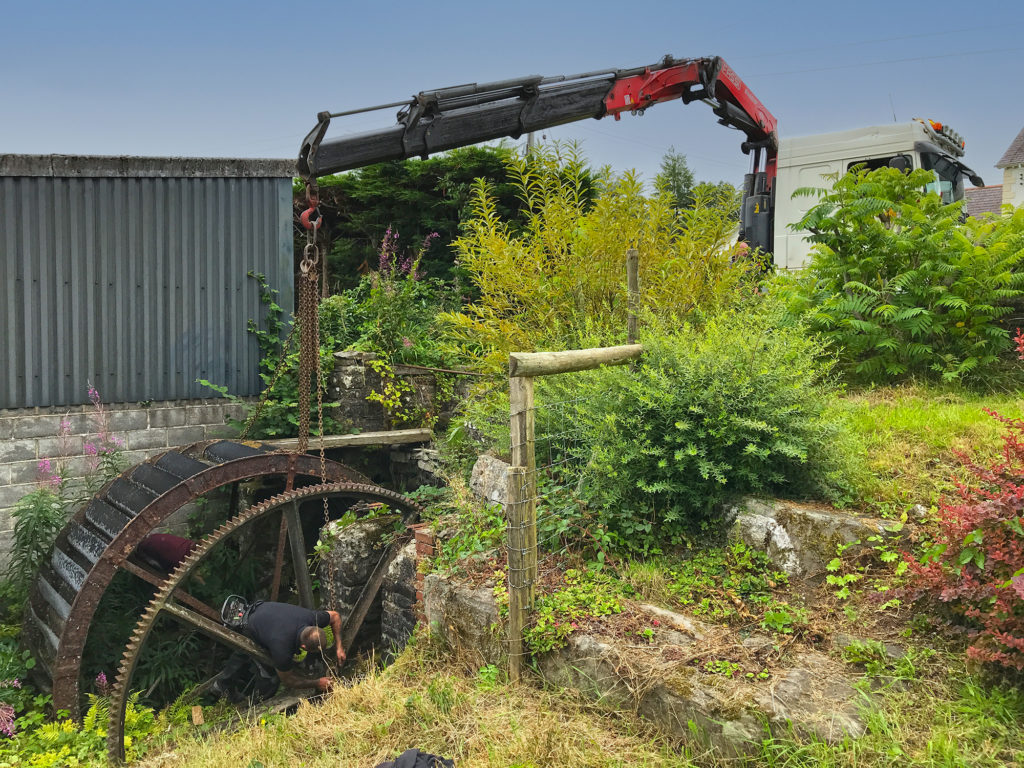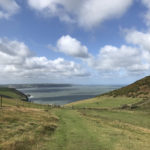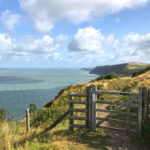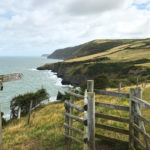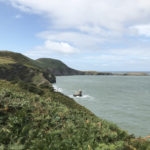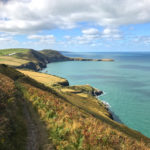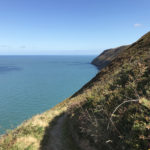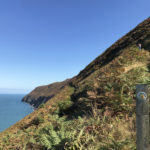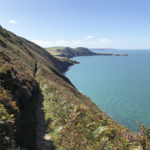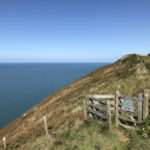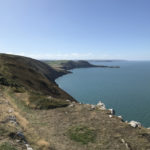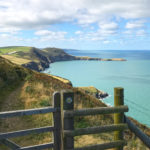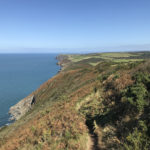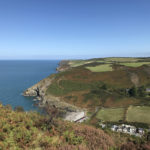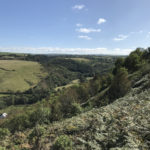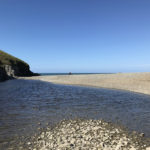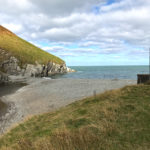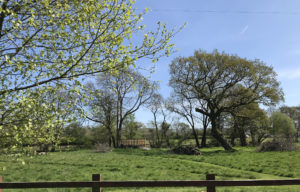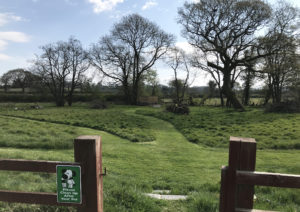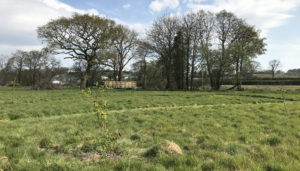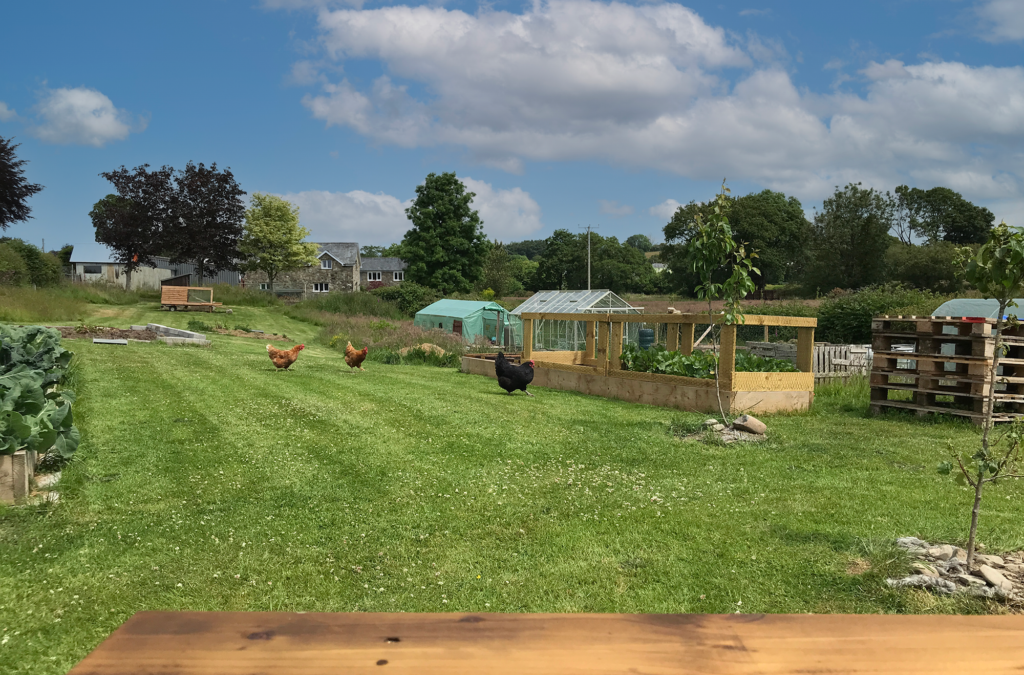
Vegetable garden
Separated off from our main field with the field paths and swing etc is our space for growing stuff of about 1/2 acre, albeit with the added difficulty of chickens roaming around, which we had to bring back over from where they were as the fox was helping himself. Its a work in progress as without protective cages over the beds the chickens just scratch everything up, so a lot of stuff is grown in the greenhouse and one of the poly tunnels. The other poly tunnel is actually for the chickens 🙂
There is a stream that runs behind from where this photo was taken which makes watering easier, plus water butts from the greenhouse.
Currently growing… Sweet potatoes, Yakon, Chinese and normal Cabbage, Runner Beans, Carrots, Tatties, Beetroot, Radishes, Spinach and some other stuff. For some reason no matter how many times we try to grow Parsnip nothing ever comes up.
If guests would like a tour just let us know.
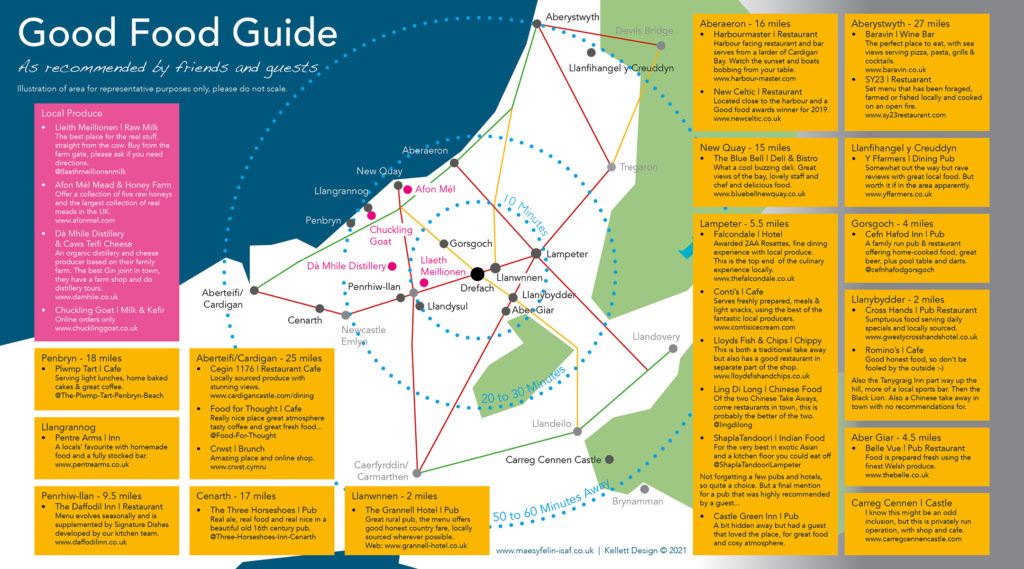
Ceredigion Good Food Guide
Just thought I would put together a quick overview of places to find good food in our area, that has been recommended to us, so its not comprehensive but offers a few thoughts and ideas from guests and friends and on occasion my own preferences. It’s an open draft so any thoughts on how it can be improved please let me know. If you click on the image it should open as a full size image in your browser.
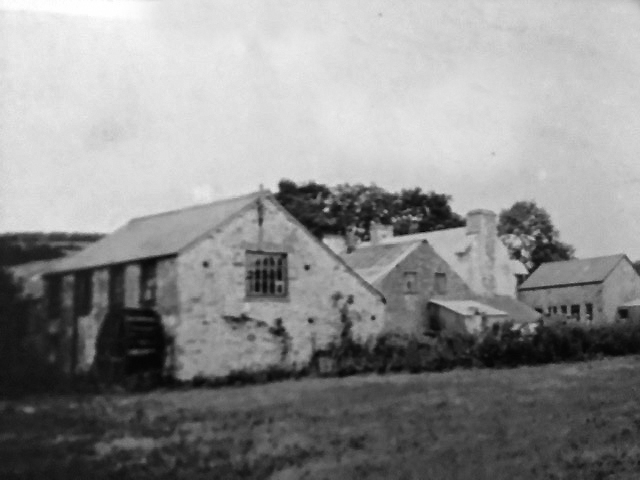
Short History of Maesyfelin Isaf
Whilst we have lived here I have had a chance to uncover some of the local history involved with the old woollen factory/mill that used to stand on this site and those that lived here, courtesy of a neighbour Hazel and the Walmsley Society, who wish to preserve the art and writings of Leo Walmsley the author. But also let’s not forget the faithful Gooogle search engine.
Below is an image of the old woollen factory probably in its heyday, predominantly making wool blankets from what I can establish, in its most complete state from what I can tell. So probably circa early 1900’s, taken from the fields looking westwards towards what is now the B4338. The unusual thing here is the location of the waterwheel, as at sometime after this photo was taken it was moved further west and changed from what must have been an undershot wheel in the photo to an overshot, maybe for better power. The building to the far right in the photo is the only bit still standing and its Hay Loft is todays Glamping accommodation.
At around this point in history Maesyfelin was also a 16 acre farm, which went up to the bridge on the main road and as such the mill race could connect with the river/stream north of the property of today. Since then though the mill race has become disconnected with the river and more recently the small stream that ran down the hill to the west that used to contribute has also been redirected. So the only water that flows along the mill race today is road run off and I assume excess water from the small stream.
Also found out from the son of one of the contractors that helped in the initial rebuild, that at about the time the ‘Jenkins’ bought the property, the council decided to widen the road by removing the old field hedge and were going to pipe the stream/mill race and road water run off, directly down to the river. But Peter Jenkins in his wisdom convinced them to pipe it to the waterwheel so he could get it going again. Mmm… not sure sure about the logic here as the amount of silt now going to be introduced and the infrequent flow water made it bad decision to my mind, especially as the tail race culvert pipe exiting from the wheel-pit is over two foot above the floor of the wheel-pit itself, so effectively not only restricting the free flow of water as it tries to exit but that it became a silt trap. Basically the Nant Cledlyn to which the tail race drains into a few hundred yards downstream, has risen (silted up) over the years, so that 2′ odd discrepancy in height was because it needed to be that high in order for it to drain out to the river, which should have been enough to say that getting the waterwheel working again with what was effectively a ‘sump’ was a terrible idea.
I can only assume that when they moved the wheel from its original location further away from the road as pictured above and turned it into an overshot wheel nearer to the road, that as opposed to the undershot which it had been originally, that they had no idea about hydrodynamics.
It can also be noted that the main entrance to the place has changed, as it used to come in where we now have the lawn in front/south of the house and very little of the old mill remains.
GENEALOGY
From a genealogy point of view the earliest records I could find go back to the early 1800’s when David Bowen (born 1784) and his wife Gwenllian appeared on the census in 1819, their son Thomas then became the head of the family circa 1861, although he did have an older brother John who was not on the 1861 census.
Thomas and Gwenllian had eleven children, although only six of them reached adulthood, their daughter Mary Gwenllian married a local strict Baptist chap from Llandysul named Titus Davis who in effect swept her off her feet and they emigrated to America and they became Mormons.
Whilst their son Thomas (also Thomas) married an Anne Jones at some point, appearing on the census in 1861 and had many children with their son William Bowen marrying a Mary Anne Davies (could have been surname Thomas) who subsequently emigrated to Iowa in the United States and had a woollen mill there and dying in 1932. An ex work colleague of mine called Leah who now lives in Iowa, USA, herself found this for me…. Nashua had one of the few successful woollen mills in Iowa, which was owned by William J. Bowen & Son. Local wool was spun into six grades of thread used to manufacture a large range of products, from the finest cloth to the coarse horse blankets. The United States Navy contracted 200,000 blankets in September of 1919. After a disastrous fire in September of 1923, and again in November of 1926, the factory moved to Cedar Falls.
In the 1891 census Anne disappears, with Thomas (II) now 62, with one of their other sons also named Thomas (III) who became head of the household in 1906 when his dad died, as the other son David is not on the census. Although strangely the probate was split between Thomas and a reverend David Davies Evans.
The young Thomas (III) appears on the 1911 census as an adult and family head married to Elizabeth, who by all accounts was Elizabeth Davies back in 1901, when she was a flax dyer working at the mill. Then circa 1931 Thomas (III) died leaving everything to Elizabeth, with the last entry I can find in 1939 with Elizabeth now 59, with daughter Anne Bowen born 1912, their sons reverend AustinBowen denoted as a farm labourer and Ifor Bowen. Can only assume that WW1 inflicted many casualties on families in the area as many names on the 1911 census disappear from the 1931 version.
They lie now in peace at Llanwenog church, up the hill.
HISTORY a bit more
The post war years are a bit sketchy and as you can see from the map above there was no Isaf (Lower) at that time. So at some point a new big house was built on the opposite side of the road, which is now Maesyfelin Care Home and this side was re named Maesyfelin Isaf. But it was on the site of todays Maesyfelin Isaf where the author Leo Walmsley apparently wrote some of his book ‘So Many Loves’ in 1944, whilst stationed in the local area, staying just up the road at the Pen Pom Pren Inn, which was (and still is) ran by a family connection to Maes y Felin on the Davies side and was allowed to use an empty barn loft as his studio being somewhere quiet to write his book.
I now have an original copy of this book, just for completeness, which guests are welcome to read during their stay.
Now many of you may look at the books cover and wonder why it’s a sketchy picture of Robin Hoods Bay, well firstly that was his home town but also early sketches were found here on site. In the mid 1980’s when Maesyfelin Isaf as you see it today was being built, the Walmsley society came to visit the old barn before it was knocked down and I have a picture courtesy of the Walmsley Society to illustrate this, that shows its origins sketched on the wall in the same barn.
In the 1980’s it was owned by Peter and Daphne Jenkins who bought it in 1980 from Mr and Mrs E. P. Liani, although at that time it included the land up to the point where the mill race joined the Nant Cledlyn, which he must have sold off as there are now four bungalows built on that parcel of land. During the Jenkins tenure they did an excellent job of building most of what you see today, including the ‘Annex’ which they built in 1982/83 (as discovered under wallpaper) to live in whilst they worked on the house, which was signed off in 1985/6 by all accounts.
RECENT HISTORY
More recently it became obvious that the waterwheel had to come out before it rotted away, as covered earlier in this article. But basically it sat/sits in 2′ to 3′ silt because the tail race culvert pipe was above the floor of the wheel-pit itself, so decided to offer it out via Facebook and Gumtree to a new home. To keep it short the wheel now resides near Dihewyd which is the other side of Lampeter, where it will be put back into operation again after a bit more work on his old mill building, as opposed to being a garden ornament that will eventually rot away.
If you want to see the video of the lift see Video Link
Many thanks to Hazel Thomas (Relative in the Davies line), Marilyn Barraclough and Jane Ellis (Walmsley Society), Joy Bennett (Grand daughter of Thomas Bowen) and Leah Mitchel for their help in me writing this article.

Llangrannog Beach and Coastal Walk II: to Cwmtydu
Following on from my other post regarding walk from Llangrannog, this is the extension that takes you northwards to Cwmtydu, which we actually did over two trips but it is possible to do in one and return, the sequence of photos is going north but either or which way doesn’t matter. So the first bit from Llangrannog is as per the first post in this series and then picks up at the point the land side of the big hill that you can walk around from part I. The walk is well way marked so would be hard to get lost, but no promises.
As the photos show, there are a couple of bits where there is a sharp drop off to the sea below but it’s not that bad, I’m not great with heights but I managed. A big benefit of this walk is that in the summer months there is/was a small cafe at the Cwmtydu end and public toilets, plus a car park. Hence doesn’t matter which end you start really.
Part III when I get round to it, will be the bit between Llangrannog and Penbryn, which if you are brave (I wasn’t) it is possible to access a lovely secluded beach by a short scramble.
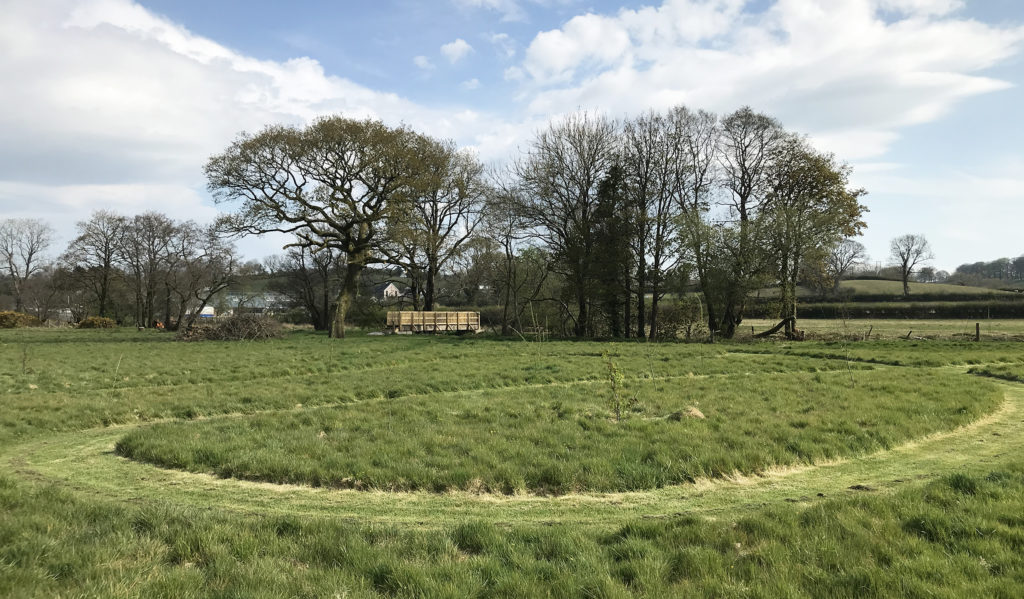
Turning Pasture to Meadow/Woodland
Back in March 2018 when we first came to Maesyfelin Isaf the local farmer Gareth had used the field for grazing his sheep for nigh on 20 years, with permission from the previous owners, using fertiliser and stuff to keep the grass growing long and his sheep well fed. But that was to be the last year as we have since left it alone, other than to let Gareth cut silage last year in return for some favours including digging out the tail race.
Since then we have basically left it alone until recently when we have started to plant a variety of trees, we had a lad who stayed with us for while who was a tree planter and he planted some baby oaks and Alder or something for us. Plus in the last few months we have added a load more, mostly from cuttings which we planted when it was very wet and boggy which have took very well, including a willow tree and again more recently when a guest very kindly donated some more trees including Horse Chestnuts.
At the moment as you can see from the pictures it is very hard to tell anything is there, but they are just about visible and hopefully in the coming weeks as they green up a bit more. The plan is to get the field area to be not exactly re-wilded but hopefully a bit more natural and to replace some of the trees we have had to take out, together with providing screening and a nice place to walk. Hence the mown paths running around, following the river plus a few twist and turn offshoots
We have also over the two years or so slowly removed the wire fencing by the river, firstly because it looked so ugly but also it meant we couldn’t get to the banks to cut down the weeds and stuff. This also had the added effect of allowing the river to once again flow better during floods, as the wire fence weeded up and formed a semi permeable flood barrier so the river ended up being a torrent 6″ or so above the flooded fields, that was in October 2018. These last few months what with the long non grazed grass, the river has been in the field more often but for the most part not seen.
